






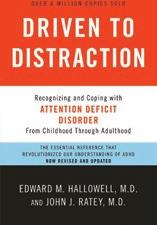






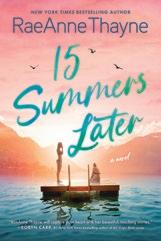







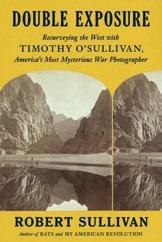













































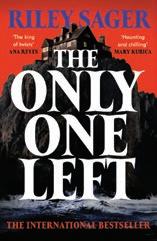







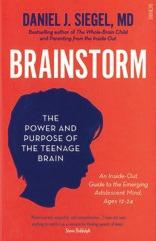
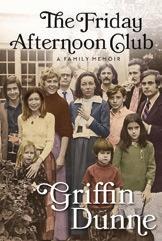

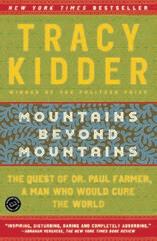

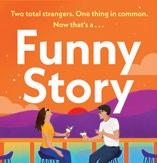
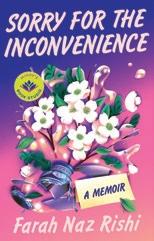
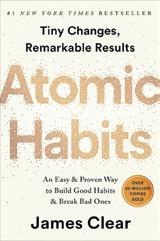
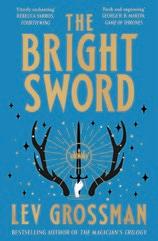


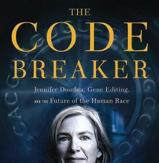

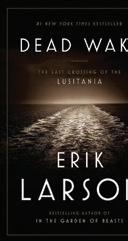

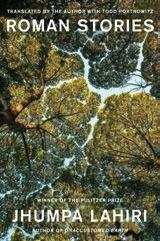

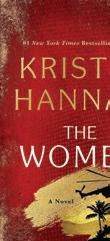
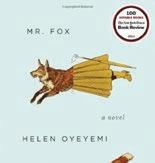
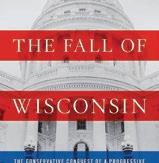

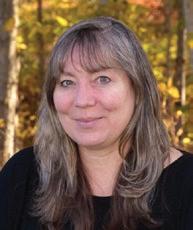
Dear Falmouth Academy Community,
Welcome to the 35th edition of The Bookworm, Falmouth Academy’s beloved collection of book reviews. Each year, this curated list reflects the tradition of our faculty immersing themselves in a wide range of summer reading and bringing back insights to share with our community. This year’s edition is more than a celebration of literature; it’s also an invitation to reflect on the shifting landscape of adolescence, an increasingly digital terrain that presents new challenges—and new conversations—for educators and families alike.
As part of a faculty-wide initiative to understand and support student well-being, we thoughtfully engaged with The Anxious Generation by Jonathan Haidt. Falmouth Academy’s School Counselor, Jen Chamberlain, captures the essence of Haidt’s powerful message in her review. According to Haidt, technology has reshaped adolescence, making traditional milestones harder to reach, and bringing with it a “perfect storm” of pressures that teens—and the adults around them—must navigate with care.
Chamberlain’s words echo Haidt’s hope: a belief that, with intentional choices and policies, we can create environments that encourage a “playbased, rather than phone-based, childhood.” As we adopt new technology practices here at Falmouth Academy, like rethinking our cell phone policy, we are reminded of the ways schools and families can work together to foster face-to-face connections and create spaces where students can grow without the weight of constant connectivity.
You’ll find a special list curated by Chamberlain at the back of this edition—books thoughtfully chosen to support both teens and parents in a world that often feels too fast-paced and too connected.
We hope you enjoy this year’s Bookworm and find inspiration for the year ahead.
Happy reading,

Britta Santamauro Director of Library and Archive
Falmouth Academy
7 Highfield Drive, Falmouth, MA 02540
508-457-9696
falmouthacademy.org
Administration
David Perry, Head of School
Petra Ehrenbrink, Academic Dean
Michael Deasy, Dean of Students
Katharine Enos, Director of Development
Sarah Knowles, Director of Admission and Enrollment Management
Carmen DiSanto, Director of Finance and Operations
Editorial Staff
Amy Galvam, Director of Communications
Julianne Waite, Designer
Our Mission
Harnessing the power of inspired learning in a world-renowned scientific and vibrant artistic community, Falmouth Academy emboldens each student to take creative and intellectual risks to confidently engage the challenges of our times.
Guiding Values
We value...
• the beauty of knowledge and the joy of conversation
• collaboration and generosity of spirit
• the power of a culture of kindness
• relationships built on trust, respect, and direct communication
• the wonder of imagination
• each student’s pursuit of diverse challenges and opportunities
• teachers as models of confident, rich adulthood
• the richness of an educational experience that includes people with diverse backgrounds, perspectives, and identities
DEI Statement of Commitment
Falmouth Academy is committed to continued growth in the area of diversity, equity, and inclusion. We intentionally strive to be a community of dedicated learners who understand their roles and responsibilities as local and global citizens confronting the challenges of our times.
North Woods
Daniel Mason
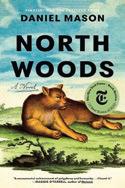
In recent years, I’ve been drawn more and more to Eco-Lit, or Eco-Fiction. Though the genre undoubtedly has roots in the work of Emerson and Thoreau, some recent authors have revitalized the genre (often with a climate change/eco-anxiety angle). To name a few: Richard Powers’ The Overstory, Lauren Groff’s The Vaster Wilds, and Kathryn Harlan’s collection of short stories, Fruiting Bodies. I’ve enjoyed each of these in their own way, but none as much as Mason’s North Woods.
Set in the mountains of (what becomes) Western Massachusetts, it’s a story that sprawls centuries, beginning in the early Colonial era and ending in a vague near-future. What makes North Woods different, though, is that its protagonists aren’t people, but instead a house and the land it stands on. Characters come and go—an apple farmer and his family, a mountain lion—but the house remains, with only us as readers bearing witness to the beauty and transformation of the place. Part Eco-Epic and part everyday humanity, North Woods reminds us how lucky we are to experience the wonders of nature, and how small we are in the immensity of time.
The Storyteller
Dave Grohl

Last year was one of the worst years for my reading lists. I found it difficult to finish books, and I didn’t read nearly as many books and articles as I would have liked. This year, I started by reading The Storyteller by Dave Grohl. I tend to stay away from rock memoirs; they are filled with exaggerated stories of wild escapades while on tour— looking at you, Mötley Crüe. Often, the genre is filled with either poor writers or, worse, ghostwriters who fail to accomplish their job. The Storyteller is not one of them. Dave Grohl was the drummer for Nirvana, the trailblazing trio of grunge music of the early 1990s. Although I was not alive during their heyday, I can appreciate their cultural legacy. To this day, students still have Nirvana pins, stickers on their laptops, or songs on their Spotify playlists. I can imagine some parents reading this are Gen Xers and may appreciate this review. Although Nirvana released arguably the most consequential albums of the 90s, Grohl does not spend too much time reminiscing about his three short years in the band. His writing on his time in Nirvana—during its peak fame and success—reveals a slice of humility that he displays throughout.
Grohl eventually became the frontman for the Foo Fighters and would sell out arenas. Throughout his story, he offers candid yet giddy remarks whenever something surreal happens to him: playing with Paul McCartney, hosting Saturday Night Live a record 19 times, or playing for a president at the White House. His sweet sincerity is woven into his trials on tour and stories of live performances. It seamlessly toes the line between corny dad vibes and genuine admiration. Any reader can tell the author’s appreciation for the position he is in and the sense that he is living out a dream. Many famous people can become jaded with the entertainment industry and, at times, with the craft to which they’ve dedicated their lives. Fortunately, this memoir does not fall into that trap.
The Storyteller is a light read; I finished it in a day or two, and it reignited my love for a good story. If you are looking for something to bring you back to when you wore flannels and had long hair, this may be the hit of nostalgia you need.
Heather Cox Richardson
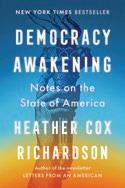
Heather Cox Richardson is arguably one of our modern era’s most vocal and prominent historians. The Boston College professor is a distinguished scholar of American history, author of the famed Substack newsletter Letters from an American with a whopping 1.5 million subscribers, and host of the podcast Now and Then Regardless of her accolades, Richardson is an historian who can weave the relevance of current events into larger historical narratives. Her newest book, Democracy Awakening, does something similar—it blends various historical periods into a seamless narrative.
Richardson breaks her new book into three sections. The first section is a review of post-Civil War United States. This summary is short—about 80 pages—but packs a punch. Reader beware: if you are unfamiliar with or need some brushing up on your U.S. history, you may want to reread and spend more time with this section. I suggest that you read her earlier work, How the South Won the Civil War, which shares similar themes (or if you have a junior, ask them about their summer reading).
The second section digs deep into the recent history of the evolution of the Republican Party. Similar to her past work To Make Men Free, Richardson traces the modern roots of the GOP from Joseph McCarthy’s Red Scare to Newt Gingrich’s Contract with America through the Tea Party. The book juxtaposes the concept of American identity with the symbolic nature of “Western chauvinists.” She reaches a climax, breaking down the impact of January 6th.
Section three takes a different turn. Richardson goes back in the timeline and analyzes the founding documents—the Declaration of Independence, the Constitution, and the Bill of Rights. Yet throughout her analysis, she keeps the crown
jewel of Reconstruction, the 14th Amendment, in sharp relief. Richardson envisions how this monumental amendment to the Constitution has shaped the past century and a half. In turn, she aptly describes how the quest for American democracy and our stride towards egalitarianism is the challenge of our time. It is a sober look at American history, yet it never fails to show the optimism and hope that the framers instilled in our country in that hot summer of 1776.
Dan Kaufman
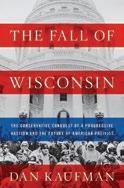
Kaufman’s book was published in 2018 and has been on my shelf for a few years. As the election drew nearer, I figured it would be a worthwhile read. What caught my attention is that the themes he presents are prevalent not just in Wisconsin but throughout the country. It was a fascinating read—albeit maybe not the lightest for a honeymoon in Hawaii.
Kaufman traces the roots of migration to Wisconsin from the early colonial period through the present day. He describes how the Germans brought their food, such as beer and brats—now hallmarks of Wisconsin cuisine. Meanwhile, the Scandinavians brought their community-oriented traditions. In turn, a culture of social democratic policies and norms emerged in the latter half of the 19th century. It peaked in 1911 with the legendary progressive governor turned senator, Bob LaFollette. Kaufman describes the ascendency of “Fighting Bob” and some of his hallmark achievements, including worker protections, pushing through the 17th Amendment, and leading investigations into the Tea Pot Dome scandal.
Throughout the book, Kaufman details how, in the postWorld War II period, a slow decay occurred throughout the Rust Belt. New players on the scene, such as Senator Joseph McCarthy, became the face of the anti-communist crusade that was a hallmark of the Cold War. Conservatives found new opportunities in the 1980s and used their policies to convert a longstanding blue state into a red state.
The book details Governor Scott Walker’s rise to power. Walker would go on to run for president in 2016 but would be unsuccessful. It weaves in the rise of future political players like former Lieutenant Governor Mandela Barnes (no relation), who ran for Senate in 2022 and lost. What is interesting about this book is how it reminds us that “red states” and “blue states” are not always set in stone. California produced two of the most influential Republican presidents of the 20th century (Nixon and Reagan). In today’s world, that would seem almost inconceivable.
Now that the election is over, it’s important to reflect on how we got here by revisiting the recent past.
Barbara Campbell Director of Alumni and Parent Relations
RaeAnne Thayne
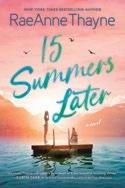
As teenagers, sisters Madison and Ava are dragged to a “Prepper” camp by their father after their mother passes away. Their father’s extreme survivalist beliefs take a dark turn when 16-year-old Ava is forced into an arranged marriage with a man 30 years her senior. The sisters manage to escape, but their desperate bid for freedom becomes a nightmare. Seeking help, they stumble into another camp, only for Madison to be shot in the head and their would-be savior to be killed.
Fifteen years later, Ava has written a bestselling memoir about their harrowing experiences. The book’s success reignites Madison’s trauma, leaving her furious that her sister is making her relive the nightmare all over again. Despite this deep conflict, the sisters eventually reunite, though their relationship remains strained. A series of painful yet healing events finally brings them closer, forcing them to confront their past.
This was a great story, lightened by touches of romance and adorable animals that added warmth to the narrative.
Kristin Hannah
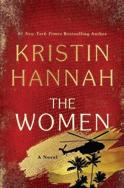
This was one of the best books I’ve ever read. Set during the Vietnam War, the novel reveals the sacrifices women make as soldiers and shows how they succeed as heroes every bit as much as men do. Idealism quickly turns to courage under fire as we follow Frances (“Frankie”), a member of the Army Nurse Corps, both in-country and back home in a divided United States. Written by the author of the highly popular The Nightingale, set during World War II, this book is just as exciting and hard to put down.
Christine Carter French, Spanish
Sorry for the Inconvenience: A Memoir
Farah
Naz Rishi

I am not typically a consumer of nonfiction, but this memoir, which often reads like fiction, caught my eye. Farah Naz Rishi is a Pakistani-American writer raised by a mostly traditional family. Her father is a respected doctor, her mother a housewife, and she is particularly close to her brother, Shaz. Naz Rishi enrolls at Haverford College, in part, as she admits, because it’s “embarrassing to admit,” to
meet a boy—“preferably a nice Muslim boy my parents would actually approve of.” Instead, she meets Stephen, a selfassured, laid-back Jamaican student. Everything about Stephen is different from Farah and her upbringing, but she can’t help being drawn to him.
Throughout her time at college, and later in places like New York City and Portland, Oregon, Stephen becomes the thread seemingly holding Farah’s life together, though she can never quite decide what role he plays in her life or how he fits into it. As she navigates family tragedies and her conflicting feelings about her professional ambitions (she wants to become a writer), her connection with Stephen provides stability in her increasingly chaotic world.
While this book contains its share of tragedy, it is ultimately hopeful, cheeky, and inspiring, emphasizing the importance of connections—however complex they may be.
The Anxious Generation
Gillian McAllister

For years, I’ve said I’m beyond grateful that I went through high school with a flip phone and a rudimentary MySpace account because it likely saved me a great deal of anxiety. Social psychologist Jonathan Haidt expands on these nostalgic thoughts in his newest book, The Anxious Generation, which details the challenges teens face in today’s technological world. In this four-part work, Haidt examines how societal factors, coupled with the rise of technology, have created a perfect storm, preventing adolescents from experiencing hallmark childhood events that prepare them to meet life’s challenges. As a result, teens are reporting unprecedented levels of anxiety, depression, and mental health distress, unlike any generation before.
The statistics Haidt presents are sobering at first glance, but he instills hope in the latter half of his book by offering concrete solutions for both parents and schools to consider. He explores how to disconnect students from their devices while simultaneously reconnecting them in person. Some of these recommendations were reviewed by Falmouth Academy when reconsidering our cell phone policy this year—a trend that many school districts and even states are exploring as they move toward cell phone-free school days. Haidt argues that through such policies and parental support, we can bring children back to a play-based, rather than phone-based, childhood.
Kristin Hannah

The Women begins with Lieutenant Frances “Frankie” McGrath, a starry-eyed young nurse, as she enlists to serve in Vietnam. During her “in-country” experience, the reader is taken into both the dark and heroic aspects of what nearly 10,000 American women experienced during the war. Upon Frankie’s return, Hannah painstakingly depicts the ambivalent reality that Frankie and other female veterans faced: the general public opposed them for participating in the war, while Veteran Affairs and fellow soldiers didn’t acknowledge their need for support, as they hadn’t seen direct combat.
Through sisterhood, heartbreak, and the various ways people seek healing from Post-Traumatic Stress Disorder (PTSD), Frankie ultimately finds a path forward for herself and the other women who “were there.”
Eleanor Clark English
Mr. Fox
Helen Oyeyemi

“We dream, it is good we are dreaming. It would hurt us, were we awake. But since it is playing, kill us. And—we are playing— shriek…” How fitting that a character slyly slips a quote from Emily Dickinson into the opening chapter of Helen Oyeyemi’s Mr. Fox, for the novel, too, is playful and clever and not afraid of the dark. The book begins with a challenge. The fictional author, St. John Fox, is a villain—or so says his muse, the imagined Mary Foxe, who sashays back into his life after a considerable absence, and as we get to know him, we are inclined to agree. His stories, as they approach complexity, tend to end the same way: with a death. “You kill women,” Mary points out. “You’re a serial killer.” And while St. John attempts to defend the necessity and logic of his plots, eventually he accepts her statement that he must change. Sort of. Back and forth, the two engage in a kind of literary duel, offering us mesmerizing little stories that include versions of themselves, author and muse, in various roles— some from familiar tales such as Bluebeard, Reynardine, and Fitcher. Despite his willingness to play the game and try to change the endings, St. John keeps failing, lopping off a head at the last minute. When in doubt, kill her off. Eventually, though, the dance shifts, particularly as we hear more and more from St. John’s wife, Daphne Fox, who, it turns out, has creative powers of her own. The characters of Mr. Fox are funny and flawed, animal and human, and very, very appealing. With the slyness of one of Emily Dickinson’s dashes, their stories form bridges, shifting back and forth between our ability to hurt and our ability to love, until gradually, and somewhat surprisingly, we sense we may have reached a
happy ending. “I’m going now,” one character tells another. “Be bad. Be wicked. And you should worry. But don’t.”
Riley Sager (pen name of Todd Ritter)
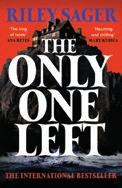
I kicked off summer with a trip, and not knowing anything about this book or author, I picked up this NYT #1 Bestseller at Logan Airport and zipped it into my carry-on. After easing into quiet time on the beach, I started it and couldn’t put it down! I ended up reading it in two days. I was hooked by the ease of the writing style, the intrigue of a murder mystery with more than one twist, and the constant question of, “Could this be true?” throughout the book, even on the last page.
This is the story of a home health aide named Kit, assigned to oversee the daily needs of an elderly, bedridden woman named Lenora. Despite their age difference, both women share a common experience: each is accused of a murderous past. They quickly develop mutual compassion and eventual trust, leading them to reveal the pain and sadness of their lives. The mystery is continuous, and the author kept me guessing who, what, and how throughout the 400 pages. Who killed three of the four family members? What led the prestigious Hope family, who seemingly had it all, to end up with nothing? How did a silly childish rhyme turn into decades of belief?
I enjoyed turning the pages, discovering new characters and different motives, peeling back the layers of both women’s pasts, and the courage it takes to be honest. Oh, and my jaw dropped at the end! I appreciate a story that keeps me not only interested but also surprised.
Double Exposure: Resurveying the West with Timothy O’Sullivan, America’s Most Mysterious War Photographer Robert Sullivan
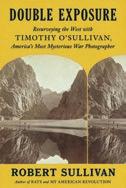
Look again. In Double Exposure, Robert Sullivan—or, Bob, as I’ll refer to him to avoid confusion—asks us to be suspicious of a first impression. The book follows the footsteps of Timothy O’Sullivan, an Irish immigrant and camera operator known for the conflict-defining photographs he made of the Civil War. The “Civil War”—language that demands another look—would have been a mysterious and perhaps even offensive term to O’Sullivan, who witnessed and documented a fraternal carnage across the eastern American landscape that wouldn’t be broadly termed “civil” until the decade after his death from tuberculosis in 1882. After making his final wartime photographs at Appomattox,
O’Sullivan went west, accompanying teams of surveyors funded largely by the U.S. military, but he could not escape the infernal images he made in the “Eastern Theater”— another experience that now has a tidy name (PTSD) but which, upon second examination, we understand would have been an uncanny and most certainly untidy experience for O’Sullivan. Here is where Bob begins his book. As he follows O’Sullivan across the American west, Bob asks: what was the land to O’Sullivan? How does O’Sullivan’s understanding of the land, as gleaned from his photographs, inform our understanding of America? How do we write a landscape and how does a landscape write us? What, essentially, is “the West”? How does conflict change the land? How does it change us? To answer these questions, Bob crisscrosses the American continent, traveling to the sites of O’Sullivan’s photographs to “resurvey” America. Buoyed by an insatiable curiosity, a terrific sense of humor, and a well of compassion, Bob’s body and his prose serve as light-sensitive film, absorbing and presenting to us the intricacies of the land just as O’Sullivan’s photosensitive materials did. Bob forces us to look again at our landscape, to see and appreciate its beauty, but also, to understand how the American continent is– very much to this day—a theater of war and resistance. I had the pleasure of taking a class with Bob this summer. As the best teachers and writers do, he has changed what I see when I look out the window.
Carmen DiSanto Director of Finance and Operations
Lynda Rutledge
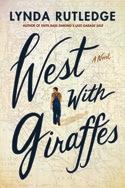
Whether you’re a history buff, an animal lover, or simply looking for a moving and engaging read, this novel will captivate you. West With Giraffes is a heartwarming and adventurous tale that offers both entertainment and a glimpse into a fascinating moment in American history. The story is inspired by true events from 1938 when two giraffes survived a hurricane-ravaged Atlantic crossing and were driven across the United States to their new home at the San Diego Zoo.
Told through the eyes of a young, orphaned boy named Woody Nickel, the novel follows his coming-of-age journey as he becomes the unlikely driver tasked with transporting the giraffes thousands of miles across the country. The book beautifully captures both the American landscape and the spirit of Depression-era America, weaving in themes of survival, kindness, hope, and the unique bond between humans and animals.
If you’re in the mood for an unforgettable historical novel that blends adventure, heart, and the enduring connection between humans and animals, West With Giraffes is a book for you.
The Four Winds
Kristin Hannah

Kristin Hannah’s The Four Winds is a moving and compelling historical novel set during the Great Depression and the Dust Bowl era. The story begins in Texas in 1921 and spans through the 1930s, depicting the severe droughts and horrendous dust storms of the Great Plains, the subsequent economic hardships of farmers, and the mass migration of people seeking a better life in California.
The novel centers around Elsa Wolcott, who grew up in a wealthy family. Having been sick as a child, she was perceived as weak and timid by her parents, often feeling unloved and dismissed. After a romantic encounter with Rafe Martinelli, a younger man of Italian heritage, leaves her pregnant, Elsa’s father forces her to marry him and live on his parents’ farm. Initially unhappy about being abandoned by her family, Elsa soon realizes that her new family has much more love to offer.
Years later, when severe droughts and relentless dust storms destroy the Martinelli farm, Elsa embarks on the treacherous journey to California with her two children. However, the promise of a better life turns out to be an illusion; as migrant workers, they face discrimination from locals and encounter exploitation and grueling labor conditions. Over time, Elsa finds strength and resilience in the face of these challenges, transforming into a determined and courageous woman.
The Four Winds illuminates a pivotal period in American history but also resonates deeply with contemporary themes of survival and the pursuit of a better life. It is a testament to the strength and perseverance of those who endured one of the country’s most challenging eras.
Petra Ehrenbrink Academic Dean, Modern Language Chair
The Djinn Waits a Hundred Years
Shubnum
Khan
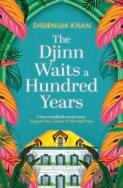
This lovely gorgeously written story tells a rich tale of grief, the struggle of letting go, and love. With a touch of Gothic mystery, the author made me want to uncover the secrets of a dilapidated mansion built by an Indian immigrant in Durban, South Africa, just as much as Sana, a fifteen-year-old new tenant, does. She accompanies her father on his new career path while trying to escape her family’s losses. Be careful: you may want to read this novel in a single day.
Lea Carpenter
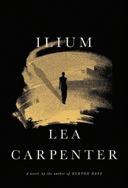
Written in elegant prose, this literary novel is also a story of espionage, love, loss, and the harsh realities of war. A longplanned, high-stakes operation needs just the right asset to succeed, and the young narrator unwittingly turns out to be that asset, playing a part among other players— none of whom may be what they seem. I usually do not pick up spy novels, but I was intrigued by the title’s reference to the Iliad and wanted to find the connections. Carpenter’s prose weaves itself almost dreamlike around big questions, rendered with emotion and deep human awareness.
Juan Gómez-Jurado

Antonia Scott makes a fascinating protagonist in this smart thriller from Spain, which combines a complex story with wellrealized characters and moments of wry humor. Traumatized and highly intelligent, Antonia is a legend when it comes to solving baffling crimes. She is paired with suspended police officer Jon Gutiérrez to work behind the scenes of a murder and abduction investigation, leading this unusual team to a hidden mastermind with even more sinister plans. This was an exciting and entertaining read, and I can’t wait to see how the story continues in the next installment.
Juan Gómez-Jurado
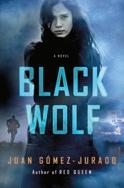
Part two of the trilogy featuring Antonia Scott and Jon Gutiérrez is just as exciting as the first. This time, the team tries to find a woman on the run who escaped her assassins. It’s a stand-alone case that turns out to be part of the bigger hunt that Antonia can’t let go of. The only disappointment is that the final installment of the trilogy won’t be out until March 2025.
Kimberly Brubaker Bradley
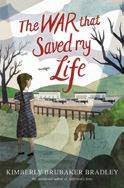
In 1939 wartime London, ten-year-old club-footed Ada has never been allowed to leave the apartment she shares with her mother and younger brother Jamie, because her abusive mother feels humiliated by Ada’s mere existence. When the city evacuates children to the countryside to escape impending bombings, Ada and Jamie are
placed with the reluctant Susan Smith, starting a journey none of them could have imagined. A Newbery Honor awardee, The War That Saved My Life is a moving tale of family, identity, and the power of love that can be found in unexpected ways. When I picked up this young adult book, I did so out of curiosity rather than true interest—only to find I couldn’t let Ada’s story go until I had read through it in one session. It’s a remarkable book.
James
Percival Everett
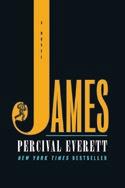
From the author of Erasure, which was made into the film American Fiction, comes a captivating reimagining of The Adventures of Huckleberry Finn, this time told from the perspective of Jim. Not a big fan of Twain’s book, I was unexpectedly drawn into this funny and terrifying novel. If it isn’t already, this book will be a new American classic.
Dashka Slater
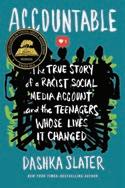
A high school student creates a private Instagram account featuring racist and sexist memes to make his friends laugh at his “edgy” humor. But social media accounts are never truly private. After the account is discovered, almost everyone in the small city must deal with the repercussions. The book poses big questions: Where do the boundaries of friendship end? What does accountability really mean? It’s an urgent read that illustrates how thoughtless moments can unravel an entire community. If you think this can’t happen in your town, think again. As I read this book, my local newspaper reported a similar incident in a neighboring town just two weeks ago. Accountable makes an excellent companion piece to Jonathan Haidt’s The Anxious Generation.
Lichtspiel
Daniel Kehlmann
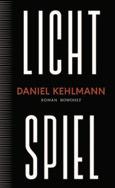
After brilliantly focusing on Friedrich Gauß (known in English as Carl Friedrich Gauss) in Die Vermessung der Welt (Measuring the World) and Till Eulenspiegel in Tyll, Kehlmann’s most recent book spotlights the film industry of the 1930s and film director G.W. Pabst, considered by some as one of the greatest directors of his time. As before, Kehlmann explores the connections between art and power, beauty and barbarism, light and darkness. It’s a book that makes you want to learn more about the real-life characters and their roles in shaping not just film history, but history itself.
The Wager: A Tale of Shipwreck, Mutiny, and Murder
David Grann
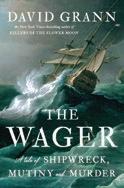
This book practically jumped off the shelf at Eight Cousins while I was holiday shopping last winter. I purchased it for my historian father, who read it and then returned it (downsizing…). His re-gifting worked in my favor. I dove into this historical yarn of—well—shipwreck, mutiny, and murder, and enjoyed every page. The latest work by Grann, author of Killers of the Flower Moon, combines primary and secondary sources to weave an almost unbelievable story. From the logbook entries of British sailors whose ship was lost off Cape Horn to post-voyage accounts of their shipwreck, stranding, and survival, The Wager: A Tale of Shipwreck, Mutiny, and Murder keeps readers guessing as to what really happened. More broadly, through his examination of the British Navy’s scandalous charges of mutiny and the subsequent court-martial, Grann reminds us that even today, those who control the narrative also control history.
The Distance Between Us
Reyna Grande

To celebrate Hispanic Heritage Month, I read The Distance Between Us by Reyna Grande. My family has a few different types of immigration stories to the United States and elsewhere. Our recent immigration experiences involved tedious paperwork, some expired visas, and a bit of stress when crossing borders—but the harrowing journeys to escape persecution are generations past.
In The Distance Between Us, Grande shares her family’s immigration story from Iguala, Mexico, to “el otro lado” (the other side), or the United States—though hers is a different kind of story. For Reyna, “el otro lado” was a mysterious place beyond the mountains where parents left their children to seek a better life. For the children left behind, life was filled with hunger and longing. In this memoir, Reyna vividly recounts her experiences in Iguala, first under the care of her stonehearted grandmother, then with the warmth of a loving one, but never with the parents she yearns for.
When she finally makes the arduous, dangerous trip to “el otro lado,” she discovers that while there are opportunities, they come with new hardships and expectations. Grande eloquently takes the reader along on her journey—from scavenging for food in Iguala to crossing the border into the United States, experiencing her first kiss, and ultimately mastering English to become a successful writer.
Reading Grande’s memoir deepened my appreciation for the privilege my family and I have had in our own recent
immigration experiences, highlighting the complex emotional and physical challenges many continue to face in pursuit of a “better life.”
Bettina Freelund German, Academic Support
The Language of Flowers
Vanessa Diffenbaugh
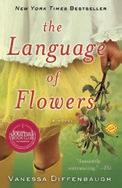
What happens when emotions run so deep that we cannot find the words to express them? Some of us may adopt a “Victorian” approach—keeping a stiff upper lip and avoiding the subject altogether. In Diffenbaugh’s The Language of Flowers, Victoria Jones avoids talking to anyone about her life in the foster care system. At eighteen and newly emancipated, she is left with nowhere to go. Distrustful of those around her, she finds solace in the quiet beauty of flowers.
Passed down from a foster mother, Victoria possesses a unique gift: she knows the Victorian language of flowers, where plants and blossoms convey specific meanings. Soon, she begins arranging flower bouquets for an ever-growing list of clients. Through her carefully crafted bouquets, she helps them communicate unspoken feelings—yellow roses for jealousy, hazel for reconciliation, honeysuckle for devotion, myrtle for love, moss for maternal tenderness…
A dark and traumatic secret from Victoria’s past begins to surface when she meets someone who, like her, speaks the language of flowers. This encounter threatens to unravel the fragile sense of peace she has built for herself.
Amy Galvam Director of Communications
Oath and Honor
Liz Cheney
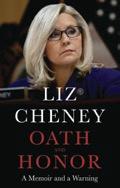
I picked up Oath and Honor after reading Democracy Awakening by Heather Cox Richardson with my book group. We even took a field trip on a school night to An Unlikely Story bookstore in Plainville, MA, to attend a reading by Richardson. During our discussion, some members expressed concerns that, while insightful, Richardson’s perspective felt too one-sided, even for a historian. We agreed on the pressing need for more meaningful discourse and the ability to bridge partisan divides. One member suggested we read Liz Cheney’s Oath and Honor to explore a different viewpoint.
Curious about whether I could find common ground with someone whose political and social views differ significantly from my own, I was pleasantly surprised by Cheney’s work. What stood out to me was the thorough research, transparency, and integrity she brings to the book—qualities that lend Oath and Honor an undeniable weight.
The book delves into Cheney’s role as a key figure in the January 6th Committee, her defense of the Constitution, and her unwavering stance against those in her own party who sought to undermine the democratic process. Cheney recounts the events surrounding January 6th but also reflects on the broader fight to protect democratic ideals, even at significant personal and political cost.
Having had the opportunity to hear Cheney speak at the WGBH Speakers Series earlier this fall, I was struck by her intellect, thoughtfulness, and commitment to upholding core democratic principles, despite what it has meant for her standing within today’s Republican Party.
Cheney’s Oath and Honor affirms that principled leadership still exists and that democracy’s promise is worth defending— even when it demands courage and sacrifice from all of us.
Andrew Leland

In The Country of the Blind, Andrew Leland offers a deeply personal and insightful exploration of blindness, not just as a physical condition, but as a way of being in the world. As someone who is gradually losing his vision due to retinitis pigmentosa, Leland navigates the uncertain terrain between sightedness and blindness with both vulnerability and humor. The book intertwines memoir with broader cultural and historical examinations of blindness, providing a nuanced portrait of experiences, perspectives, and reflections on what it means to live in a world designed for the sighted.
One of the novel’s greatest strengths is Leland’s ability to blend his journey with philosophical inquiries into disability, identity, and marginalization. He challenges readers to reconsider their assumptions about blindness and disability in general, sensitizing them to the lived experiences of those who navigate the world differently. Leland draws on a wide range of references—from literature and film to disability activism— to deepen his exploration, making the book as intellectually stimulating as it is emotionally resonant.
The book offers a compelling way for readers to gain insight into what it’s like to be part of a marginalized community. Leland’s writing invites empathy, not through pity but through an understanding of the challenges and joys of blindness. Rather than portraying blindness as a purely tragic experience, Leland offers moments of levity, discovery, and adaptation, making the book a powerful reminder of human resilience and the diversity of experiences that shape our identities.
Overall, The Country of the Blind is a thoughtful, engaging read that will resonate with anyone interested in the intersection of personal narrative, disability, and societal perception. It’s a must-read for those who want to better understand the complexities of navigating life on the margins.
The Mother’s Recompense and The Old Maid
Edith Wharton
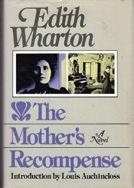
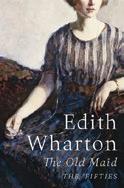
As a young teen, I first encountered the links of the sapphire bracelet that “seemed like manacles chaining [Lily Bart] to her fate,” and I have been enthralled with Wharton’s work ever since. Lily is the protagonist of The House of Mirth, a Wharton masterpiece, and I find myself rereading her story every few years. Wharton brilliantly portrays the hypocrisy of high society in the Gilded Age, showing what a stultifying trap it can become. Men, too, are wounded by these rigid morals. Newland Archer, in the Pulitzer Prize-winning The Age of Innocence, suffers in his own way as much as Ellen Olenska. Director Martin Scorsese called his 1993 film version of The Age of Innocence “the most violent [film] I ever made,” and though the violence is emotional rather than physical, it wreaks devastating damage.
Over the summer, I encountered two lesser-known Wharton novels, each of which bears a plot that sounds almost like a Lifetime movie soap opera, but in Wharton’s hands, makes for engrossing reading. In The Mother’s Recompense, Kate Clephane returns to New York society twenty years after fleeing what she saw as a prison of a marriage. The lover with whom she ran off left long ago, and the novel begins with her mourning the loss of a recent lover, a younger man who abandoned her three years before. The deaths of both her husband and mother-inlaw allow Kate to return to New York and the warm embrace of her now-grown daughter, Anne. Anne, alas, is engaged to the lover Kate mourns. Drama ensues.
Bette Davis chewed the scenery with relish as the title character of the film version of Wharton’s novella, The Old Maid, which tells you pretty much everything you need to know. Unwed mother Charlotte must give up her child to cousin Delia to keep her place in society. As an added plot twist, the father of Charlotte’s baby, Tina, is Clement Spender, a lover Delia jilted. (In the film version, production codes kill off Clement in the Civil War, but in the novel, he is alive and well.) Forced to watch her daughter acknowledge Delia as a loving mother figure and herself as a bitter old maiden aunt, Charlotte looks on in horror as her own history seems poised to repeat itself when Tina falls in love with Lanning Halsey, far above her in social status unless Delia officially adopts her. Drama ensues.
Terry Szuplat
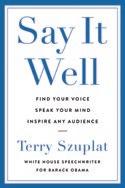
Szuplat, East Falmouth native and former White House speechwriter for Barack Obama, gave such an engaging and compelling lecture at the Marine Biological Laboratory’s Falmouth Forum in September that all available copies of his book at the event sold out. Thanks to Eight Cousins Bookstore, I had my copy in hand two days later and devoured it. The book, which I have already begun to use in my Rhetoric class for Falmouth Academy seniors, delightfully blends practical advice with real-life examples, many involving former President Obama who, Szuplat makes clear, took a very active role in the writing process. One of my favorite anecdotes involves the speech Obama made at the memorial service for the victims of the 2013 Boston Marathon bombing. “Whenever I work on a speech,” writes Szuplat, “I try to think of someone specific—a real, living person the speech should connect with, deeply, emotionally, and I try to write for them.” With only 48 hours to prepare, Szuplat decided to write the speech with his Boston-area family, especially staunch conservative and no-fan-of-Obama Uncle Dan, in mind. I’ll leave you to discover both Obama’s and Uncle Dan’s reactions for yourself.
Dennis Lehane

The oppressive heat of South Boston in the sweltering summer of 1974 only heightens the tensions surrounding the impending desegregation of Boston Public Schools and the broiling ugliness of unbridled racism, all of which serve as the backdrop for this tense novel. Born and raised in the South Boston public housing projects, Mary Pat Fennessy “looks like she came off a conveyor belt for tough Irish broads.” Life has not been kind; Mary Pat’s first husband died, her second husband left, her son overdosed on heroin after serving in Vietnam, and she works two jobs but cannot pay her bills. She fears for her only living child, her fragile daughter Jules, who seems destined for heartache. In Mary Pat’s world, “you are either a fighter or a runner. And runners always run out of road.” Jules runs out of road when she goes missing early in the novel, at the same time that a young Black man is found dead on the subway tracks. The two stories connect over the course of this tightlypaced novel, but Boston native Lehane’s crime thrillers are never just whodunnits. Lehane captures the poverty, hopelessness, and anger exploited by the Irish-American mob that runs Mary Pat’s South Boston. Mary Pat’s dogged refusal to stop searching for her daughter puts her in direct conflict with mob boss Marty Butler, who cannot afford any attention
placed on his turf. Much of the novel is ugly, filled with racist slurs, violence, and despair, but it is worth reading not only for its deeply flawed, pugnacious protagonist but also as a reminder that we have not yet dug out the deeply ingrained racism that stunts its characters.
Tom Lake
Anne Patchett
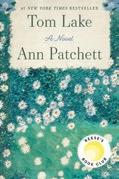
Previously reviewed by one of my esteemed colleagues (see Monica Hough’s review in Bookworm 2023-2024), Anne Patchett’s Tom Lake is worthy of a repeat recommendation. To fully appreciate it, one should first reread Our Town by Thornton Wilder, especially if your last experience with this play was in high school. This three-act play is a quick read, a powerful retelling of the riddle of the Sphinx, and holds great significance for any adult grappling with the challenges of mortality.
Tom Lake is beautifully written, engaging, and entertaining. The novel tells the story of Lara Nelson, an actress who was perfectly cast as Emily in a remarkable production of Our Town as a young girl. The narrative follows her life as an actress, mother, and wife, interwoven with frequent recollections of her past as she shares her earlier life experiences with her three daughters. For additional pleasure, Patchett’s novel is rich with references to Our Town, making it even more enjoyable for those familiar with the play.
Sarah Knowles Director of Admission and Enrollment Management
Pink Whales
Sara Shukla
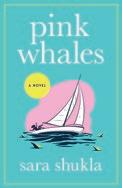
This past spring, Falmouth Academy past parent Sara Shukla generously donated a copy of her debut novel, Pink Whales, to the school’s library. As soon as I saw it, I knew it would be one of my summer reading picks. Growing up in New England, I was captivated by my mother’s well-worn 1980s copy of The Official Preppy Handbook. Although it was written as satire, its depiction of preppy culture—from country club fashion to cocktail conversation— seemed to hold underlying truths about the social dynamics of privilege. Shukla draws from this culture to set the tone of Pink Whales, quoting the handbook on its opening page. Pink Whales is set in a wealthy seaside town in New England where one’s status at the country club, yacht club, and beach club is as significant as one’s professional standing. As new transplants to the town, Charlie and her doctorhusband find themselves being introduced to a wide cast of
affluent characters and their backstories. As Charlie struggles with the anxiety of fitting into this privileged circle, she becomes keenly aware of the unspoken rules and expectations dictated by wealth. Over time, she realizes that the polished veneer described in The Official Preppy Handbook hides deeper truths about the complexities of privilege. If you like a story of rich people behaving poorly, you’ll enjoy this read.
Emily Habeck

I love an absurdist fiction novel that leaves you reflecting long after you’ve finished it. Emily Habeck’s Shark Heart opens with an unusual premise: humans can possess a genetic mutation that causes them to transform into animals. When Lewis learns he’s slowly turning into a Great White Shark, his wife, Wren, must grapple with the reality of losing the man she loves to an unstoppable force. Lewis’ nose flattens, new rows of teeth break through his gums, his thirst and appetite increase, and his night vision sharpens. He also feels flashes of aggression and apathy. Habeck uses this concept to explore the emotional and physical transformations that strain their relationship. With a set timeframe for Lewis’ transformation, Wren must decide how to face the challenges ahead.
What makes Shark Heart so compelling is how it takes its surreal premise and turns it into a study of resilience, adaptation, and the complexity of love. It will resonate with anyone who has experienced love, illness, caretaking, or loss.
I keep encouraging every bookworm to read this novel so that I have more people with whom to discuss its many layers. Who would have thought that a book about turning into a shark would offer such a profound reflection on what it means to be human?
Molly Baz
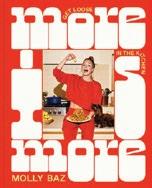
Looking for a cookbook that makes you feel effortlessly cool? Look no further than Molly Baz’s second cookbook, More Is More: Get Loose in the Kitchen. As Baz explains to the reader, “more is more” is an ideology to embrace in the kitchen; it’s a commitment to explore bigger and bolder flavors.
As a modern-day entrepreneur and chef with a dedicated following, Baz started her culinary career as a Senior Food Editor at Bon Appétit, showcasing approachable and fun recipes on camera. Known for her playful shorthand—like calling a “Caesar Salad” a “Cae Sal”—she infuses every dish with a burst of flavor, whether it’s through added salt, herbs, or clever pairings. After leaving Bon Appétit, she published her first cookbook, Cook This Book (2021), aiming to inspire a new generation of home cooks to find joy in the kitchen.
Baz organizes More Is More into nine recipe sections, along with additional sections on rules, salt, equipment, kitchen organization, and essential pantry ingredients—making it accessible for new cooks. Each recipe is intuitively designed, highlighting quick meals and offering pairing suggestions that any dinner host would appreciate. Plus, Baz includes audio and video cook-along QR codes for a lot of her recipes.
Recipes I already have on repeat include Crispy Orecchiette with Spicy Sausage & Collard Ragu, Skirt Steak with Juicy Tomatoes & Salsa Macha, Curried Lentil & Sweet Potato Potpie, and Piñacillin.
Head to your local bookstore and grab this vibrant red cover with its retro-inspired photos. As Molly Baz says, “I promise, it’s going to be delicious.”
Liz Ledwell English Department Chair, Drama
The Bright Sword Lev Grossman
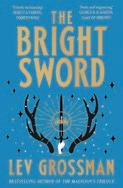
I’m a fan of Arthurian romances, and whenever I pick up one of Lev Grossman’s books, I’m invariably drawn to the stories that are inspired by books I loved as a child. Clearly, Grossman and I had similar reading lists. His Magicians series is a kind of adult Narnia. His newest novel tells the tale of Collum, a knight who aspires to join the famed Round Table in Arthur’s Camelot. Sadly, Collum arrives too late to participate in the glory days, as Arthur has just died, and the old gods and fairies are returning. Grossman’s tale spins off in several directions as Collum sets off with a group of minor knights to bring peace to the realm. The story wasn’t what I expected, but I found myself rooting for all the underdogs—the neglected characters in most Arthurian tales.
Dead Wake: The Last Crossing of the Lusitania
Erik Larson
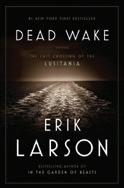
Erik Larson is one of those writers I return to again and again. His nonfiction books, including The Devil in the White City and Thunderstruck, zoom in on specific people and events from history with a novelist’s eye for detail and emotion. Dead Wake is no exception. Despite having several history teachers in my family, I knew little about the Lusitania other than that it sank during World War I. Larson’s book is filled with suspense—and even though I knew how it would end, I was still gripped by the characters and the details.
Griffin Dunne

Actor/Director Griffin Dunne has always been one of my favorite performers, from his hysterical (if dark) role in An American Werewolf in London to his masterful performance in After Hours, a cult classic from the 1980s. His father, Dominick Dunne, was a Hollywood writer and producer who reinvented himself as a true crime journalist after hitting rock bottom. He wrote about his daughter’s murder and the subsequent trial for Vanity Fair, incidentally forging a new, literary path for the magazine. The trial gripped Los Angeles during my college years, as Dominique Dunne was a young, admired actress. Griffin Dunne writes about these events and many others in a fascinating autobiography, sharing with wit and honesty the most important trials of his life. I have always admired Dunne’s acting ability, but now I am eager to see more of his writing.

I spent the waning weeks of summer engrossed in the Netflix series (based on the novel by Dan Simmons) The Terror, a beautifully acted, mostly realistic tale of the Franklin expedition, in which two ships attempting to find the Northwest Passage get stuck in the ice and the crew struggles to survive. The series and novel add a bit of mystery, and perhaps the supernatural, to these real events. One of the first characters we follow is Lieutenant Graham Gore, an officer on the expedition. Imagine my surprise when this same character appears as one of the main figures in The Ministry of Time, the tale of a Cambodian-British “bridge”—or minder—of Gore, who has been plucked from his own time period as part of an experimental time travel program. His minder is assigned to live with him for a year to observe the physical, mental, and emotional effects of time travel. At first, the novel seems like a simple lark—a story of a man out of time—but it gradually builds into more of a mystery, with a dash of romance. What fun!
The Authors Guild, Margaret Atwood, et al.
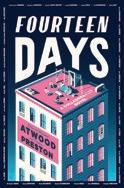
Set in a New York City apartment building during the early days of the COVID-19 lockdown, this novel compiles the stories of inhabitants who begin gathering on the rooftop to share bits of their histories and lives. The central figure is the new super, a young woman who starts out as a bit of a cipher but slowly emerges as one of the leaders of this ragtag group. Reminiscent of The Canterbury
Tales, the stories didn’t always grab me, and the ending felt a little too pat, but I enjoyed the puzzle of trying to figure out which of my favorite authors wrote which story (an elaborate guide detailing authorship is included at the end). I was particularly intrigued to see some authors write in vastly different styles from their other works. It seems that this game—telling tales and stitching them together—was as much for the authors’ amusement during lockdown as it was for those of us reading the novel.
My Name is Barbra Barbra Streisand
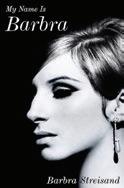
Streisand’s autobiography, clocking in at over one thousand pages, was my Christmas treat this year. I grew up listening to her albums (Stoney End was one of my parents’ favorites) and watching her films. (Until I read the book, I hadn’t realized how many I’d actually seen!) Apparently, Streisand played a greater role in my development as a theater and film fan than I had previously imagined. To my great surprise, Streisand’s detailed account of her fashion choices, and her development as a singer, actress, director, and producer captivated me. It’s easy to chalk up her success to that great voice—and to one of my favorite films, Funny Girl—but I found myself admiring the artistry in films I had forgotten and rediscovering music that I had long since left off my playlists. Not all actors are good writers, but with the exception of the final chapters, which became a bit too political for my taste, Streisand reveals herself as an honest critic of her own work and a perceptive observer of the entertainment world. I thoroughly enjoyed reading her story.
Lucy Nelson Arts
The Women
Kristin Hannah

I was a little hesitant to read The Women as I usually don’t go for historical fiction, especially books about war. However, I’m so glad I did. Once I got through its fairly slow start, I couldn’t put it down and ended up staying up past midnight a few nights in a row to finish it. The story follows Frankie McGrath, a young woman who wants to follow her brother to Vietnam. She has led a sheltered life of wealth and privilege in Southern California and has no idea what she’s signing up for. The only role for women in the war effort overseas was as a nurse, and as soon as she lands, Frankie is immediately in over her head. The training she received stateside is nowhere near adequate for handling the burns, amputations, and gunshot wounds she treats round the clock. The trauma that both the soldiers and medical personnel endure creates intense bonds of friendship and
romance. We follow Frankie’s fraught relationships as people, desperate for comfort and affection, connect with the knowledge that each day may be their last.
The second half of the book continues with Frankie’s return home and the ugly reception she and other Vietnam veterans face. The American public was highly polarized over the war effort, and there was virtually no support or gratitude for the returning vets. To make matters worse, The Department of Veterans Affairs (VA) didn’t recognize the role the women played overseas, and Frankie is unable to get the help she needs as she grapples with the trauma she experienced. I didn’t realize that it wasn’t until 1980 that PTSD became an official diagnosis, and the women of Vietnam didn’t gain nationwide recognition until the 1990s. Over 10,000 American women served in Vietnam, and The Women brings their untold stories to light.

One of my favorite books growing up was The Eyes of the Dragon by Stephen King, and Fairy Tale follows in its footsteps. It is one of the few books by King that isn’t a horror novel but rather a fantasy filled with magic, written with enough description to feel almost plausible. It’s every kid’s fantasy (or at least mine!) to discover a secret portal to a magical realm, though this is no wardrobe. We follow the story of 17-year-old Charlie Reade, who, after helping an elderly neighbor, finds a secret portal in an old shed that leads to a world plagued by a curse. The story is full of complicated relationships that Charlie must navigate, from his recovering alcoholic father to the neighbor’s aging dog to the cursed princess of the magical realm of Empis. Is it worth risking his life to help the people of Empis and break the curse? In true Stephen King style, the villain, called Flight Killer, and his army of night soldiers are terrifying. Like the Pevensies in Narnia, I held out hope that Charlie could find a way to stay in the magical world. If I were to ever find a portal, would I choose to remain in the other realm?
Jennifer Park Spanish
Kantika
Elizabeth Graver

Before reading Kantika by Elizabeth Graver, I didn’t realize that Ladino—the rapidly disappearing language of Sephardic Jews—closely resembles Spanish and dates back to before the Spanish Inquisition. Kantika, meaning “song” in Ladino, is a multigenerational novel inspired by the life of Graver’s grandmother. Set in the early 1900s, it follows Rebecca Cohen, whose family moves from
Istanbul to Barcelona after her father faces financial hardship and as conditions worsen for Jews following the fall of the Ottoman Empire. In Barcelona, he becomes the caretaker of a secret synagogue, while Rebecca supports the family as a talented and innovative seamstress. The narrative later shifts to Havana and New York, tracing Rebecca’s journey of resilience and adaptation. Graver explores themes of displacement, discrimination, disability, and endurance, all against the backdrop of rising authoritarianism in Europe. Though Kantika is a work of fiction, it is deeply rooted in Graver’s family history. The inclusion of photographs of Graver’s grandmother, Rebecca Cohen, at the start of each chapter adds a personal dimension to the story—I was captivated by each one and felt a pang of disappointment when I reached the final photograph.
Ben Parsons Middle School Coordinator, English
Birnam Wood
Eleanor Catton
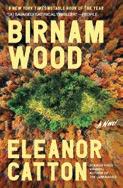
I absolutely loved Eleanor Catton’s The Luminaries, a sweeping tale of New Zealand’s colonial early days, so I was excited to find familiarly mist-shrouded landscapes, fascinatingly flawed characters, and beautiful prose in her latest novel. Although the title doesn’t give anything away, the reader knows that this will be a tragedy of Macbethian proportions, with the environment front and center in a struggle for power between ideologues of different political persuasions.
There are so many things to love about Catton’s prose, but I am most in awe of her ability to create incredibly believable—and, as such, fatally flawed—characters. In this novel, I particularly loved Catton’s portrayal of Kiwi millennial crusaders for environmental justice, whose anti-capitalist rhetoric and practices are challenged not only by political and economic forces but also by their own personal relationships. As the characters and their respective designs for the environment (and for each other) come into focus, the novel gathers momentum as a suspenseful thriller, playing out in fancy SUVs and on a canvas of green hills hiding vast secrets beneath. “Till Birnam Wood remove to Dunsinane, I cannot taint with fear!”
North Woods
Daniel Mason

So many great reads—fiction and nonfiction—feature distinctive houses that serve as more than just part of the setting but as dynamic central characters. For me, the most memorable of this genre (A House for Mr. Biswas, The Yellow House, The Outermost House) describe modest dwellings of precarious standing that offer their
humble, often disenfranchised inhabitants a bulwark in a storm. North Woods fits into this “house as protagonist” genre and does so in some really new and interesting ways. Mason sets his house in the Berkshire Hills, a “north woods” environment familiar to most New Englanders, and charts its construction and survival across several generations of striving but quirky inhabitants. But the allure of his narrative lies less in the struggles for permanence, love, and justice faced by the characters who come and go across generations and more in the styles he uses to convey their stories. Mason weaves their narratives together with photographs, drawings, excerpts from a Farmer’s Almanac, lyrics to various folk ballads, and artifacts and speeches that seem to come right out of a small town’s historical society. Like the house and its surrounding landscape, this “polyphonic” style captures human and natural histories of the area that are as symbiotic as they are precarious.
The Books of Jacob Olga Tokarczuk
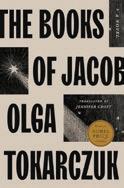
The Books of Jacob by Olga Tokarczuk was a difficult but fascinating read. I chose it because I love historical fiction, and it explores a period of history I knew little about. I was impressed with how thoroughly the author researched an obscure yet fascinating 18th-century Jewish religious leader who defied tradition and sparked controversy with his radical beliefs. For readers who appreciate literature that engages with the complexities of history, faith, and human nature, Tokarczuk’s magnum opus will be a delight. Winner of the 2018 Nobel Prize in Literature, Tokarczuk constructed a dense and intricately woven narrative, blending fact and fiction to explore themes of religion, identity, and transformation.
At the heart of the novel is Jacob Frank, a messianic figure who emerges as a complex, enigmatic character. He inspires a fervent following, challenging both Jewish orthodoxy and Christian institutions with his antinomian ideas. Frank preaches an unconventional path of salvation, combining elements of Kabbalism, Christianity, and Islam while leading his followers through a series of mystical rites and rebellious acts. Tokarczuk paints him as both a charismatic leader and a deeply flawed individual—capable of inspiring devotion but also fostering moral ambiguity and confusion among his disciples. Her deep empathy for her characters, regardless of their moral standing, allows readers to experience the tumultuous historical period from multiple perspectives, making the novel not just a biography of Frank but a profound meditation on the human condition.
At over 900 pages, The Books of Jacob is not an easy read; it took me over a year, and I often set it aside to read other things. Its breadth of historical and theological detail demands
patience and attentiveness. Tokarczuk’s prose, beautifully translated into English by Jennifer Croft, is richly detailed, lyrical, and suffused with philosophical depth. Her ability to convey the mystical and material realities of the 18th century is remarkable, as is her skill in creating a world that feels both alien and familiar.
While The Books of Jacob is rooted in a specific historical moment, it resonates deeply with contemporary issues of identity, faith, and the search for meaning. In an age where religious and ideological divisions still shape our world, Tokarczuk’s novel serves as a reminder of the complexities of belief and the ever-present human yearning for transformation. At its core, the novel is about the power of ideas to shape history, for better or worse, and the tenuous line between enlightenment and delusion.
Tracy Kidder
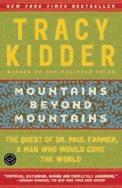
Mountains Beyond Mountains by Tracy Kidder is an inspiring biography of Dr. Paul Farmer, a physician and anthropologist whose life’s work has been dedicated to providing healthcare to the world’s poorest populations. Farmer’s journey takes readers from the remote villages of Haiti, where he founded the health organization Partners In Health, to the hospitals of Boston, the slums of Lima, Peru, and beyond. At its core, the book is about Farmer’s tireless fight against disease and injustice, and how one person’s unwavering commitment can impact entire communities.
Kidder’s narrative is intimate and deeply personal. He follows Farmer closely, documenting both the doctor’s incredible successes and the challenges he faces in delivering care in places ravaged by poverty, lack of infrastructure, and systemic inequality. Kidder presents Farmer not as a flawless hero, but as someone who is intensely driven—sometimes at the expense of his own well-being—and whose expectations can seem almost impossible to meet. Through this, we see Farmer’s humanity: his frustration with global health systems, his deep compassion for his patients, and his relentless pursuit of equity.
Kidder’s portrayal of Farmer is both awe-inspiring and humbling. Farmer’s belief in healthcare as a human right drives him to achieve what seems impossible: building a hospital in rural Haiti, treating diseases many had written off as incurable, and advocating for patients whose voices are often unheard in the halls of power. Farmer’s story challenges readers to consider the moral responsibility of wealthier nations to address global health disparities and the question of what it truly means to “do good” in a world of such vast inequality.
The title, Mountains Beyond Mountains, reflects a Haitian proverb about the endless challenges we face in life, and it mirrors Farmer’s own philosophy: when one obstacle is overcome, another one awaits, but we must keep pushing forward. Farmer’s determination to keep climbing
those metaphorical mountains, no matter how steep or insurmountable they seem, is the heart of this book.
I read the book because my two daughters are both young scientists interested in serving the public good. I came away from it inspired by the idea that with enough compassion, hard work, and a belief in the common good, one person really can transform the lives of others.
A.G. Lafley and Roger L. Martin

Playing to Win by A.G. Lafley, former CEO of Procter & Gamble, and strategy expert Roger L. Martin, is a practical and insightful guide to business strategy that demystifies the process of strategic thinking and execution. Drawing on Lafley’s tenure at P&G, during which he helped rejuvenate iconic brands like Olay, Gillette, and Tide, the book presents a clear, actionable framework for making strategic choices that lead to sustainable success.
At the heart of Playing to Win is a powerful idea: strategy is about making specific choices to position a business for winning in its market. Lafley and Martin argue that strategy is not about trying to be the best at everything, but about making bold choices—where to play and how to win in those areas. The book outlines five key questions businesses must answer to develop a winning strategy:
1. What is your winning aspiration? (The purpose of your business)
2. Where will you play? (The markets, segments, or geographies you’ll focus on)
3. How will you win? (The value proposition or competitive advantage)
4. What capabilities must be in place? (What your company needs to do well to succeed)
5. What management systems are required? (The structures and processes to support your strategy)
One of the book’s strengths is its emphasis on the discipline required for good strategy. Lafley and Martin argue that many companies fail because they avoid making hard choices, trying to do too much or spreading themselves too thin. They encourage leaders to be clear-eyed and deliberate about where they choose to compete, and to understand that saying “no” to certain opportunities is just as important as saying “yes.”
The book also discusses the importance of building the right capabilities and creating management systems that support the chosen strategy. Strategy is not just a plan on paper; it must be implemented through concrete actions and organizational alignment. This practical approach ensures that the framework presented in Playing to Win doesn’t stay theoretical, but becomes a real tool for business transformation.
The Board and I read Playing to Win over the summer and plan to use the book’s framework to define a compelling vision
for Falmouth Academy’s next exciting chapter. By focusing on making the right choices—where to play and how to win—the School will position itself for lasting success in an increasingly competitive landscape.
Helen Reuter Learning Specialist
Cold Enough for Snow
Jessica Au

Australian author Jessica Au’s second novel, Cold Enough for Snow, follows an adult daughter and her mother as they travel through Japan on a trip the daughter has arranged—that’s it for plot. The depth and pleasure of the story come from Au’s sparse, understated prose and her meticulous attention to detail. Probing what it means to know, the unnamed daughter, who serves as the narrator, searches for clues in small gestures and what is spoken and left unsaid, both with her mother during the trip and in memories—near and distant—conjured by the journey.
In explaining to her mother that she likes Greek myths because they act like a camera obscura, the daughter says, “By looking indirectly at the thing they wanted to focus on, they were sometimes able to see it even more clearly than with their own eyes.” Au succeeds in doing this, slowing the reader to notice the shadows and listen for the echoes of words suggested, ultimately finding the essence of moments and people.
Jill Reves Science Department Chair
Born in Tibet
Chӧgyam Trungpa
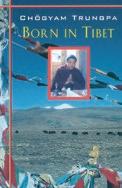
I picked up this book at the Bookmill in Montague, MA, while visiting my daughter—a must-visit used bookstore in Western Massachusetts! This young man was identified at 13 months old as the reincarnation of an enlightened teacher (abbot) in Tibetan Buddhism. His training was intense, but the story also delves into the horrific invasion by Communist China.
I learned more than I ever expected to about this war and the cruelty of men, but also about the inconceivable ability of Buddhists to maintain peaceful practices in the face of abuse. Those who do not study history are, indeed, doomed to repeat it.
Louis Haber
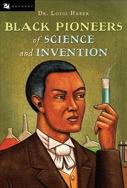
I loved reading this book, which celebrates 14 Black Americans who were gifted scientists, doctors, and engineers. I never learned about them in high school, but I feel privileged to read about them now. Despite facing abuse, discrimination, and a lack of recognition, they persevered and made significant contributions to advancements in our culture today. A great read.
Olivia Riddiford Assistant Director of Admission
Funny Story
Emily Henry
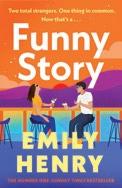
I’m a long-time fan of Emily Henry and have read all her books. After a summer filled with health and wellness manuals and The Tibetan Book of Living and Dying, Funny Story was a special treat! We meet Daphne, who, despite being a librarian, struggles to tell her own story. Her fiancé, Peter, always told their story with love and humor—until he realized he was in love with his childhood friend, Petra. And so begins Daphne’s next chapter. She learns to heal from heartbreak, discovers herself, and maybe even falls in love again… with her ex-fiancé’s fiancée’s ex. Remember, it’s a funny story.
Britta Santamauro Director of Library and Archive
The Code Breaker
Walter Isaacson
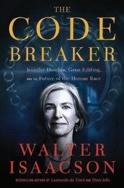
The book follows, in chronological order, the various labs and scientists who contributed to the discovery of the revolutionary gene-editing tool CRISPR. It offers an eye-opening look into the hypercompetitive world of cutting-edge scientific research. In the race to secure lucrative patents, Isaacson reveals stories of cheating, attempts to steal ideas from prepublication papers, favoritism, and and the ways in which the achievements of women were either overlooked or diminished, culminating in a shocking attempt to erase them from the history of the discovery. To my delight as a teacher, the book emphasizes the importance of keeping a science journal. These journals, with dated and signed entries, served as proof in court that Jennifer Doudna and Emmanuelle Charpentier were indeed the first to discover CRISPR-Cas9 technology, ultimately leading to their patents and the Nobel Prize in 2020. The narrative masterfully combines the excitement of discovery with deeper discussions on the future of biotechnology and its impact on society.
Fire Exit
Morgan Talty

Fire Exit by Morgan Talty is one of those books that left a lasting impression on me. It’s raw, honest, and deeply moving. The main character, Charles, navigates the complexities of life near the Penobscot reservation, searching for a sense of belonging and acceptance while facing barriers rooted in cultural identity. Though he stumbles through life seemingly without direction, his devotion to his mother, who is gradually succumbing to mental illness, is portrayed with heart-wrenching authenticity. While not an easy read, Fire Exit offers sharp insights into difficult realities, laced with moments of humor, making it a book that lingers in your thoughts long after you’ve finished it
Happiness Falls
Angie Kim
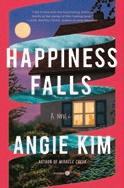
How are language and intellect connected, and what does it mean to live a happy life? What types of intelligence exist, why do they matter, and how do they relate to a fulfilling life? These are just a few of the profound questions that arise when reading Happiness Falls by Angie Kim. The characters in this biracial Korean American family are deeply relatable as they grapple with the mystery of their father’s disappearance during a walk with his non-verbal son. The novel weaves psychological insight with a philosophical lens, exploring how humans define happiness and the challenges of understanding someone without spoken language. It’s a thought-provoking read to share with others, offering a deeper exploration of human nature and the meaning of life.
Good Dirt
Charmaine Wilkerson
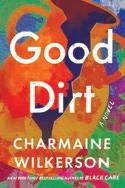
This multi-generational novel tells the story of a prominent Black family in New England, interlacing their history with the ways it continues to shape their present. The story centers on the main character, Ebby Freeman, a woman whose life is defined by three major tragedies: the unsolved murder of her brother Baz during a home invasion when she was a child, the destruction of a centuries-old heirloom jar passed down from their enslaved ancestors, and the shock of being stood up on her wedding day. The novel explores themes of grief, family legacies, and the enduring impact of slavery, with the heirloom jar as a key to unlocking both family secrets and Ebby’s journey to healing. Ultimately, it’s a story of resilience and the strength to move forward despite deep-rooted pain; it will leave you with hope and a renewed appreciation for the power of family and the human spirit.
Ruth Slocum Director of College Counseling
Jhumpa Lahiri
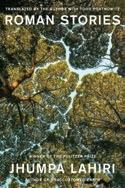
Lahiri, whose first language is Bengali and second is English, wrote these short stories in Italian and then translated them into English. She has lived in Rome since 2012, and this is her second book written in Italian. The stories are about foreignness and belonging, but the spine of the collection is the belief that one can feel either at home or unwelcome anywhere. Lahiri gives little detail about where her characters—who range from wealthy expats to poor refugees—have come from, often omitting names and physical descriptions. This forces the reader to place the characters in terms of citizenship, class, and religion—signifiers that shape the plot. In the last story, Dante Alighieri, the unnamed female protagonist is the only child of parents who immigrated to America from an unspecified country. Through the study of Dante in college, the character eventually comes to live in Rome and marries an Italian. When she later visits America with her husband and child, she feels like a foreigner in her parents’ home: “Around my parents, I felt out of place, as usual: the only child of two people who had never really taken stock of who I was.” In contrast, in Rome, she reveals that “at my in-laws’ table, enveloped in that tranquil sense of delight, I was quietly so thrilled that I feared I was on the edge between life and death.”
I enjoyed reading this collection in part because of Lahiri’s precision of language, which contributes to the universality of her themes. I also love Rome, and the way she explores how the city both shelters and repels newcomers is a lesson that can be taught in any language.
I purposely sought out two very popular and well-known authors whose work I had not read. In the case of Bill Bryson, that statement is not fully true as I had previously read The Road to Little Dribbling, essentially a revisit of his famous earlier writings about traveling around Britain, which was reviewed by Doug Jones in the Bookworm in the past year or so.
Bill Bryson

Bryson’s signature combination of genuine research, underlying an engaging— sometimes glib—narrative is on full display in this work of popular history. I already knew about some of the “magic” associated with that summer: the New York Yankees fielded perhaps the most legendary team in history, Babe Ruth slammed a record-setting 60 home runs, and America obsessed over Charles Lindbergh,
who had improbably won the race to be the first to fly the Atlantic non-stop that May. Recently, former FA teacher Pete Conzett and I enjoyed spending some time trying to think of any other individual in history who went from being a complete unknown to overwhelming worldwide fame in literally the span of 24 hours. The early part of the book focuses on the competing groups working toward winning the monetary prize for flying the Atlantic and their respective fates. Bryson does a great job conveying the almost incomprehensible degree of celebrity that Lindbergh found himself engulfed by.
Those stories were great, but what I took away most from the book were considerations of the history and impact of larger significant events, both well-known and much less so. Bryson offers some terrific insights into the realities of Prohibition and how that movement came to its short-lived triumph, as well as the only account I have ever read of the development of television. What struck me most, however, was Bryson’s telling of the 1927 Supreme Court decision in Buck vs. Bell, in which the high court, by a vote of 8-1, upheld Virginia’s 1924 Eugenical Sterilization Act. It was a shocking example of how acceptable norms and ideas can change so quickly, and also a strangely comforting reminder that outrageous court rulings—think Citizens United—are burdens that our nation has survived before, and the U.S. has endured to see those decisions discredited by history. The year 1927 offers a window into all of this, and so much more.
John le Carré
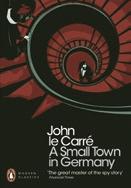
John le Carré has been a famous popular writer for my entire life, and I have long been interested in Britain, European history, the Cold War, and espionage, but I had never finished a book by le Carré. I tried Tinker, Tailor, Soldier, Spy once, but frankly found it too slow going and plodding. In both the novels and screen productions, I have never been sufficiently entertained by the widely famous fictional career of George Smiley. If you are in this likely distinct minority of readers, given the huge success of le Carré’s works, you might give A Small Town in Germany a try. This work has plenty of what I understand to be le Carré’s blurred and ambiguous lines between good and evil, right and wrong, in the context of Cold War Europe, but without George Smiley. It is set in West Germany in the late 1960s against the backdrop of radical protests centered around a fictional right-wing politician who is fueling and channeling German resentment of the British at a time when the British need the West German government’s support for the UK’s attempt to gain admission to the European Common Market. I found the novel to be very well-plotted, entertaining, and very readable. The insights offered into the complicated times of divided Germany in the 1960s were a special bonus. The book captures the feel and texture of Bonn in that time wonderfully.
James Percival Everett

There are certain books that you read in a high school English class that stick with you. For me, one of those books was Mark Twain’s Adventures of Huckleberry Finn. The story of the young teen and escaped slave making their way down the Mississippi River captivated me as a high schooler. Percival Everett’s James is a loose retelling of this classic story. While Huckleberry Finn is written from the perspective of the eponymous child, James offers us the internal psyche of the adult enslaved Jim. After learning that he will be sold to a new owner without his wife and daughter, Jim runs to a hiding spot to devise a plan. At the same time, Huck fakes his own death to escape his abusive father. The two join forces to make their way to free land so that Jim can work to pay for the freedom of his wife and daughter. The novel is full of surprises, frustrations, and glimpses of hope that make it difficult to put down. I finished reading it in two days! At times laugh-out-loud funny, and at times painfully serious, James is an incredible read. I highly recommend picking up a copy before it becomes a feature film in the coming years.
My Roman History: A Memoir Alizah Holstein

As an American scholar specializing in French language and literature, I am often asked where my passion for the subject comes from. Like many students at Falmouth Academy, I started studying French as an eager seventh grader, fascinated by the culture and history of the Francophone world. From my seventh-grade French 1A class to a high school exchange trip to the Champagne region and eventually majoring in French at Boston College, French has always felt like an integral part of my life. In My Roman History, Alizah Holstein recounts her relationship with Italian history, language, and culture, sparked by her high school interest in Dante’s Inferno. After discovering Dante, Holstein pursued a PhD in medieval Italian history. In her memoir, Holstein interweaves captivating snippets of Roman history with personal anecdotes, demonstrating how Italian history and language are central to her identity. Reading this book inspired me to plan my next trip to Rome with a newfound appreciation for the city.
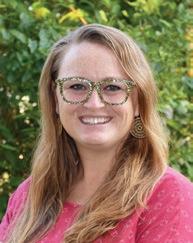
As part of Falmouth Academy’s commitment to fostering student well-being, The Bookworm is pleased to present this thoughtfully selected list of titles curated by School Counselor Jen Chamberlain. This collection offers essential resources for understanding and addressing the unique mental health challenges faced by today’s adolescents.
Explore these titles to discover valuable insights, encouragement, and practical strategies for supporting the emotional well-being of teens and the adults who care for them.
Jen Chamberlain, School Counselor

My Anxious Mind: A Teen's Guide to Managing Anxiety and Panic
Michael A. Tompkins, Katherine A. Martinez, et al.

Here I Am, I Am Me: An Illustrated Guide to Mental Health
Cara Bean

Brainstorm: The Power and Purpose of the Teenage Brain
Daniel J. Siegel M.D.


The Emotional Lives of Teenagers: Raising Connected, Capable, and Compassionate Adolescents
Lisa Damour Ph.D.

Driven to Distraction: Recognizing and Coping with Attention Deficit Disorder
Edward M. Hallowell M.D. and John J. Ratey M.D.
Self-Compassion: The Proven Power of Being Kind to Yourself
Kristin Neff Ph.D.

The Body Keeps the Score: Brain, Mind, and Body in the Healing of Trauma
Bessel van der Kolk M.D.

Atomic Habits: An Easy & Proven Way to Build Good Habits & Break Bad Ones
James Clear
Falmouth Academy is distinguished by its dedication to educational excellence, guided by its exceptional faculty and accomplished alumni. With a long-standing record of academic success, our aim is to set the standard for superior education in southern New England.
Falmouth Academy
Beyond academics, we prepare our students to be lifelong learners, responsible citizens, and ready participants in the challenges of the future. We encourage curiosity, creativity, and cultural understanding, empowering our students to thrive in an interconnected global society. Through innovative learning experiences inside and outside the classroom, we connect our students with diverse ideas, places, and cultures.
Curious about the students who come from more than 22 towns across Cape Cod, the South Shore, the South Coast, and Martha’s Vineyard to be a part of our community? Explore their stories and experiences by visiting us at falmouthacademy.org. If you’d like to schedule a tour or learn more about our admission events, please visit falmouthacademy.org/admissions or call us at 508-457-9696.
Falmouth Academy
7 Highfield Drive
Falmouth, MA 02540


